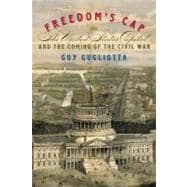
Guy Gugliotta covered Congress during a sixteen-year career as a national reporter for The Washington Post and for the last six years has been a freelance writer. He has written for The New York Times, National Geographic, Wired, Discover, and Smithsonian. He is the coauthor of Kings of Cocaine.
“In this splendidly researched and engagingly written new book, Guy Gugliotta deftly tells the intimately connected stories of the construction of the Capitol and the destruction of the Union. This is an original and compelling tale of how history really happens.” —Jon Meacham, winner of the Pulitzer Prize for American Lion: Andrew Jackson in the White House
The New copy of this book will include any supplemental materials advertised. Please check the title of the book to determine if it should include any access cards, study guides, lab manuals, CDs, etc.
The Used, Rental and eBook copies of this book are not guaranteed to include any supplemental materials. Typically, only the book itself is included. This is true even if the title states it includes any access cards, study guides, lab manuals, CDs, etc.